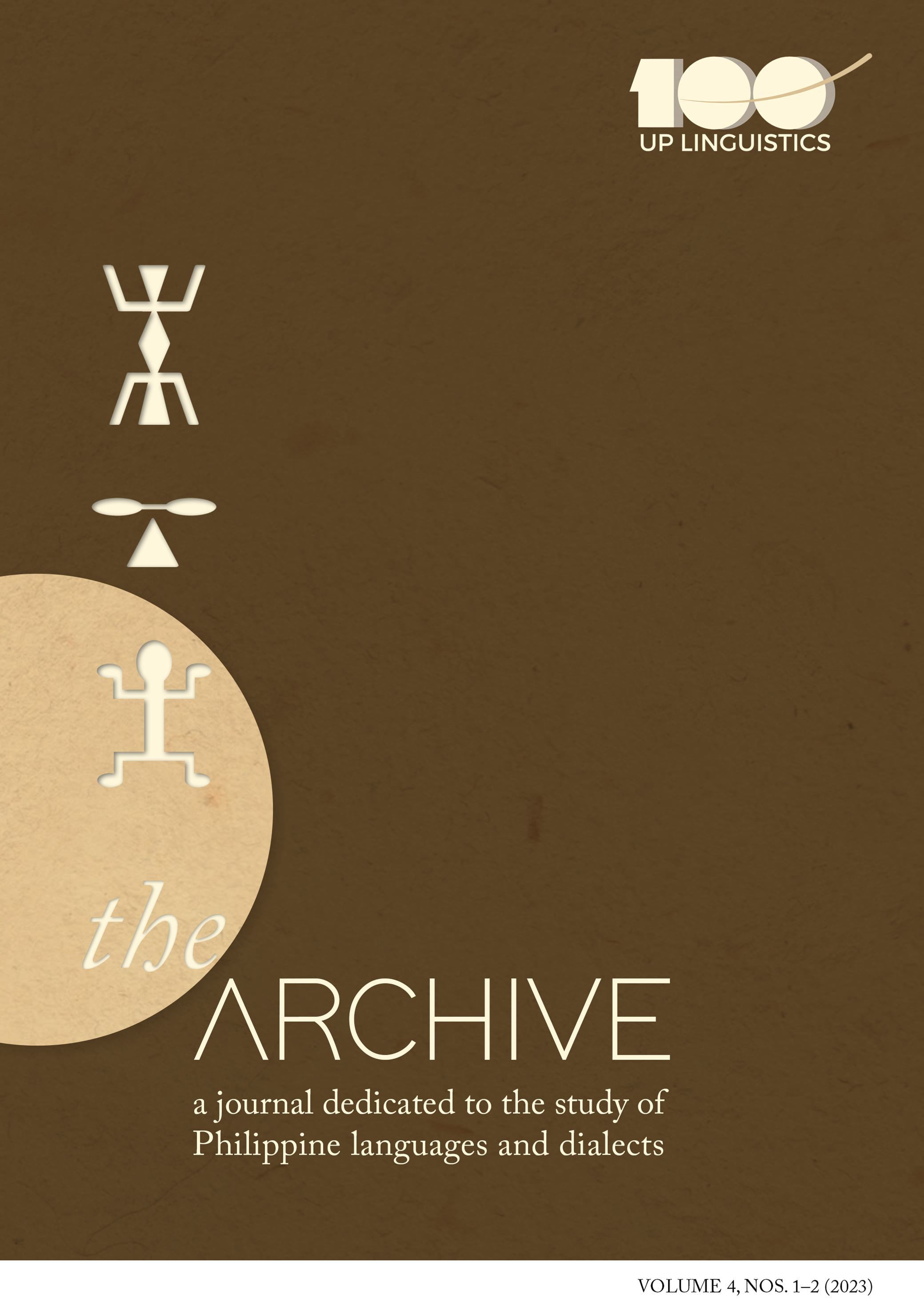The Tagalog Passive Voice in 17th to 19th-century Spanish Documentary Sources
Abstract
Since the 17th century, the voice system of Philippine languages has been an important point of inquiry for linguists, language scholars, and second language learners. The Spanish missionaries who learned, studied, and wrote pedagogical grammars of Tagalog had sensed the substantial contrast between Spanish (and Latin) and Tagalog, which they realized was even more pronounced in their voice systems. Effectively, Fray Francisco Blancas de San José (1610) reached the conclusion that the three passive verbal forms that he had identified and named after the voice marking affixes y-, in-, and -an lay as the bedrock of the basic clause structure in Tagalog. Confirmed by three other missionaries representing each of the centuries of Spanish presence in the archipelago and elaborated upon with their contributions, Blancas de San José’s analysis served as the foundation of the prevailing concept of the Tagalog voice system during the Spanish colonial period. But more than a task undertaken to typologize Tagalog, the comparison between these languages had been an important pedagogical strategy for learning the various languages of the people whom the missionaries sought to evangelize. This paper opens with an examination of how four Spanish missionaries described the Tagalog passive voice, explained the formation of passive verbs, and set the general rules for their use. Subsequently, the paper presents the grammarians’ description of the syntactic structure of non-actor topic constructions in Tagalog, in which they showed that any nominal other than the actor can be the focus (el intento) in a sentence. Finally, it discusses the grouping of verb roots with similar meaning and the specific passive voice affixes these verbs can use. Considering the state of linguistics during the time these grammars were written, this analysis of the Tagalog passive may be regarded as groundbreaking and a precursor of the contemporary descriptions of this linguistic feature.


